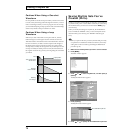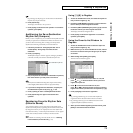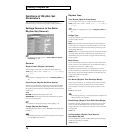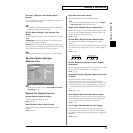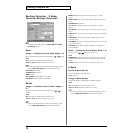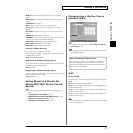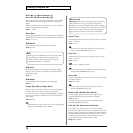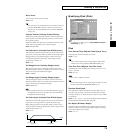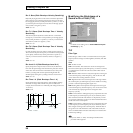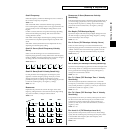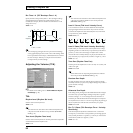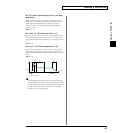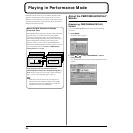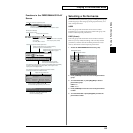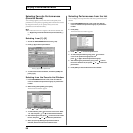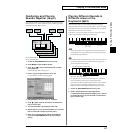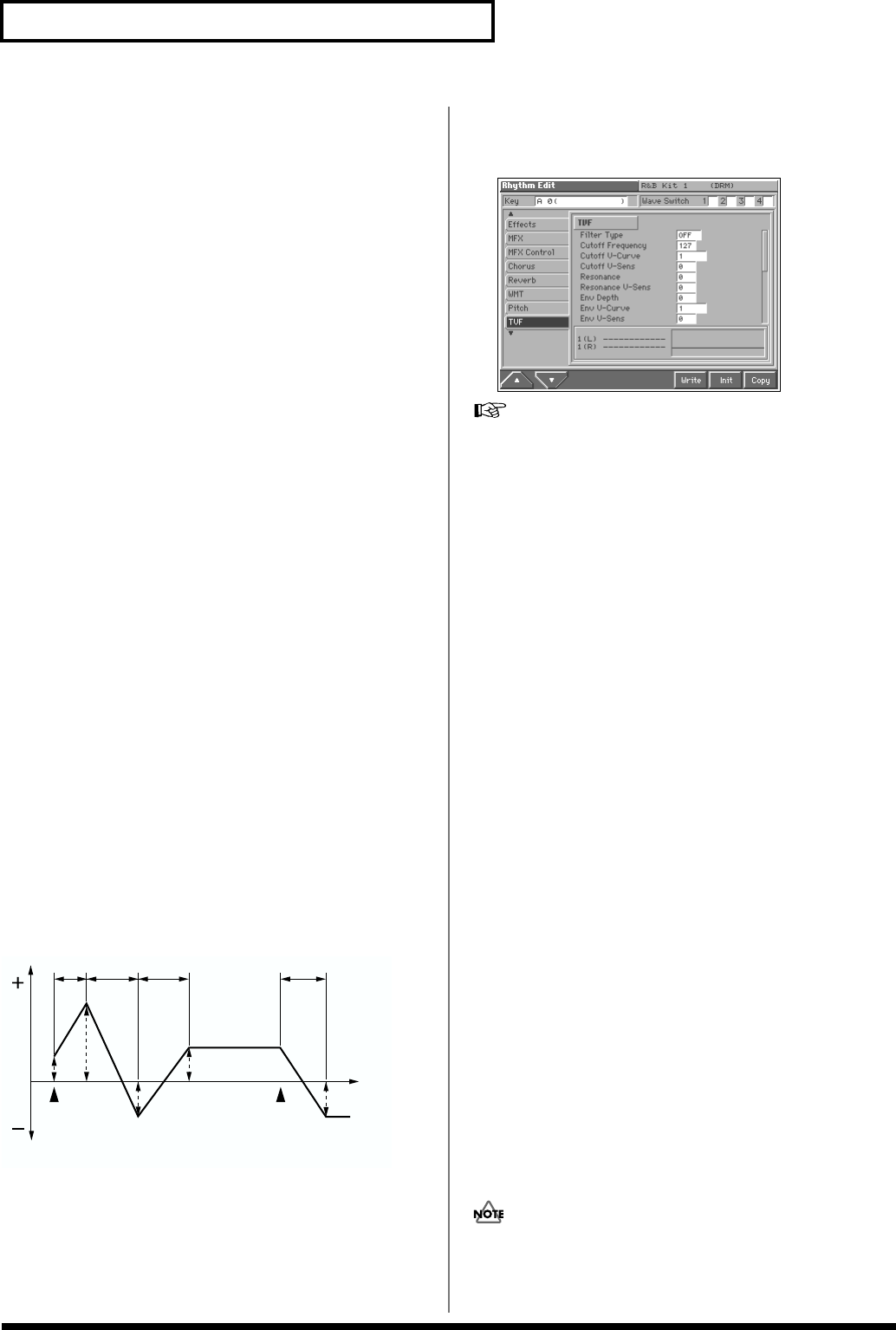
80
Creating a Rhythm Set
Env V-Sens (Pitch Envelope Velocity Sensitivity)
Keyboard playing dynamics can be used to control the depth of the
pitch envelope. If you want the pitch envelope to have more effect
for strongly played notes, set this parameter to a positive (+) value. If
you want the pitch envelope to have less effect for strongly played
notes, set this to a negative (-) value.
Value: -63– +63
Env T1 V-Sens (Pitch Envelope Time 1 Velocity
Sensitivity)
This allows keyboard dynamics to affect the Time 1 of the Pitch
envelope. If you want Time 1 to be speeded up for strongly played
notes, set this parameter to a positive (+) value. If you want it to be
slowed down, set this to a negative (-) value.
Value: -63– +63
Env T4 V-Sens (Pitch Envelope Time 4 Velocity
Sensitivity)
Use this parameter when you want key release speed to impact on
Time 4 value of the pitch envelope. If you want Time 4 to be speeded
up for quickly released notes, set this parameter to a positive (+)
value. If you want it to be slowed down, set this to a negative (-)
value.
Value: -63– +63
Env Level 0–4 (Pitch Envelope Level 0–4)
Specify the pitch envelope levels (Level 0–Level 4). It determines
how much the pitch changes from the reference pitch (the value set
with Coarse Tune or Fine Tune on the Pitch screen) at each point.
Positive (+) settings will cause the pitch to be higher than the
standard pitch, and negative (-) settings will cause it to be lower.
Value: -63– +63
Env Time 1–4 (Pitch Envelope Time 1–4)
Specify the pitch envelope times (Time 1–Time 4). Higher settings
will result in a longer time until the next pitch is reached. (For
example, Time 2 is the time over which the pitch changes from Level
1 to Level 2.)
Value: 0–127
fig.Pitch Env.e
Modifying the Brightness of a
Sound with a Filter (TVF)
fig.04-14_50
For details on the setting, refer to “How to Make the Rhythm
Set Settings” (p. 69).
TVF
Filter Type
Selects the type of filter. A filter is a function that cuts off a specific
frequency band to change a sounds brightness, thickness, and other
qualities.
Value
OFF: No filter is used.
LPF: Low Pass Filter. This reduces the volume of all frequencies
above the cutoff frequency (Cutoff Frequency). in order to round off,
or un-brighten, the sound. This is the most common filter used in
synthesizers.
BPF: Band Pass Filter. This leaves only the frequencies in the region
of the cutoff frequency (Cutoff Frequency), and cuts the rest. This
can be useful when creating distinctive sounds.
HPF: High Pass Filter. This cuts the frequencies in the region below
the cutoff frequency (Cutoff Frequency). This is suitable for creating
percussive sounds emphasizing their higher ones.
PKG: Peaking Filter. This emphasizes the frequencies in the region
of the cutoff frequency (Cutoff Frequency). You can use this to create
wah-wah effects by employing an LFO to change the cutoff
frequency cyclically.
LPF2: Low Pass Filter 2. Although frequency components above the
Cutoff frequency (Cutoff Frequency) are cut, the sensitivity of this
filter is half that of the LPF. This makes it a comparatively warmer
low pass filter. This filter is good for use with simulated instrument
sounds such as the acoustic piano.
LPF3: Low Pass Filter 3. Although frequency components above the
Cutoff frequency (Cutoff Frequency) are cut, the sensitivity of this
filter changes according to the Cutoff frequency. While this filter is
also good for use with simulated acoustic instrument sounds, the
nuance it exhibits differs from that of the LPF2, even with the same
TVF Envelope settings.
If you set “LPF2” or “LPF3,” the setting for the Resonance
parameter will be ignored.
T1 T2 T3 T4
L3
L4
L2
L1
L0
Note off
Pitch
Time
Note on
T: Time L: Level



